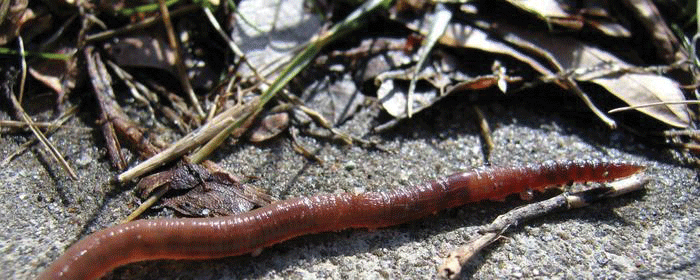Earthworms in CNY
The environmental studies program hosted a brown bag led by Professor of Biology and Environmental Studies; Chair of the Department of Biology Tim McCay titled, “Earthworms in the Upstate: the Good, the Bad, and the Ugly.” The lecture addressed recent and ongoing research regarding Native (“the Good”), European (“the Bad”) and Asian (“the Ugly”) earthworm species in the Northeast and their fight for habitat in a changing landscape.
McCay opened the lecture noting the significance of earthworms and their remarkable role as decomposers.
“Earthworms are the intestines of the Earth […] they are the rockstars of this functional niche, so it matters whether earthworms are in the system or not, and how abundant they are,” McCay said.
While native earthworm species are critical to community ecology, invader species pose a threat to the balance of natural ecosystems. As McCay describes, with the increase of trade over the past 400 years, European and Asian species have been introduced and spread widely throughout North America. Consequently, this community ecology involves differently evolved species all interacting in a changing landscape.
“This is really like candy [and] what lured me away from mammals because this story is so fascinating,” McCay said.
Prior to 2010, New York State had only one record of earthworm distributions. When McCay and his team set out to further investigate the landscape of native earthworms, they landed on Eisenoides Ionbergi – the “Bog Worm.” As McCay recounts, he and his team were originally skeptical of Eisenoides existing in its habitat of choice.
“No self-respecting worm would live in a bog. There’s no dirt there. And sure enough, there were Eisonoides […] And just like that, we had the second record,” McCay said.
As some of the first to survey the wetlands of central New York for native earthworms, McCay enthusiastically described investigating without an established protocol.
“We were just plunging our hands into the muck […] and every so often we’d come up with a worm. It was like a bonus,” McCay said.
McCay’s work soon encountered the European exotic earthworms. Although an invasive species, the European earthworms have been in North America for about 400 years – suggesting to many ecologists that they have gotten everywhere they are going to get. Skeptical of this assumption, McCay questioned whether there were additional habitats that these European species had not invaded yet. Interestingly, McCay and his team identified fourteen sites uninhabited by earthworms. So why weren’t they there?
McCay and his team addressed this question by evaluating two categories of factors – those affecting dispersal and those affecting site suitability. They discovered that distance from roads and pH were significant predictors of invaded habitats. Sites further from roads represented sites that earthworms have yet to invade, while sites with lower pH represented intolerable habitats.
“There are some places that have not yet been colonized. And if they become colonized? It’s going to change the system,” McCay said.
If these European invaders continue to expand and outcompete native species, we will witness several consequences involving climate change, carbon loss and biodiversity. Specifically interested in the effects of these earthworms on biodiversity, McCay sampled leaf litters with varying abundances of worms.
“[There is] a pretty big drop-off in all other invertebrates when worm abundance increases, due to a decrease in the amount of organic habitat available,” McCay said.
While European invaders pose a threat to the ecological landscape, Asian invaders or “crazy worms” may be an even greater fear. With huge metabolic rates and defensive behavior, these Asian invaders can be easily identified.
“Put [the worm] in your hand and poke it. If it jumps out of your hand, it’s a crazy worm,” McCay said.
Although McCay and his team suspect that these species are outcompeting European invaders, very little is known about these Asian species.
“We’ve got nothing. In order to determine how bad they are going to be, we need to research their dispersal ability, reproductive ability,” McCay said.
Professor Cardelus of the Biology department posed a difficult question at the end of the lecture.
“So how can we stop these species?” Cardelus asked.
Professor McCay admitted that in terms of stopping these invaders, there is not an effective way to remove them.
“It’s really about slowing them down and for the Asian species, I don’t know if anyone has found a way to slow [them],” McCay said.
Senior Environmental Studies major Kiki Torpey was particularly interested in the data presented and its larger implications.
“The lecture was really interesting in depicting how invasive species are outcompeting native species. It will be interesting to see if these changes in biodiversity have any implications regarding soil quality and composition,” Torpey said.







